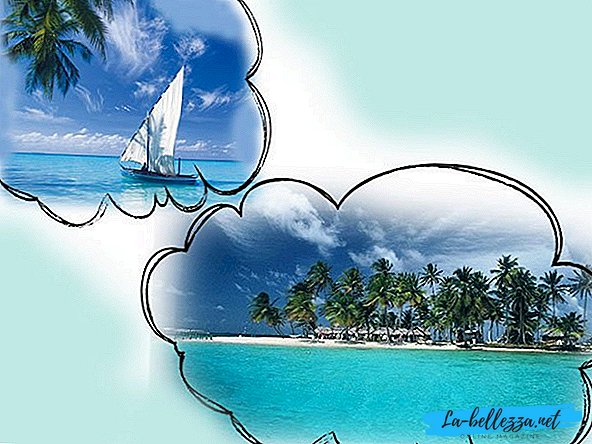
Holidays January 18
Epiphany Eve
On this day in the evening, people prepare for the great Orthodox feast of the Lord's Baptism. This holiday is celebrated by the Orthodox Church. On this day, events related to the baptism of Jesus are recalled; the baptismal ceremony was performed by John the Baptist. This ceremony was carried out to cleanse the soul, because of this, when Jesus came, John at first refused to baptize him, said that he himself should be baptized from Christ. This day is also called the Epiphany, because it was at that time that God appeared to the world in three faces. January 18 is still considered the day of the Great Sanctification. People come to the temple who want to receive holy water; entire lines of people are lining up for miraculous water. In order to bless the water in the temple, they use the baptismal order. Drink this water strictly on an empty stomach, in a small spoon, in small sips. Believers, waking up in the morning, are baptized, ask God for blessings for a day, wash themselves and drink holy water. If a person takes any medicine prescribed by a doctor, they first drink holy water and then the medicine. After all this, you can already have breakfast and do daily tasks.
It is believed that women should not drink such water during menstruation, if it is healthy, but if it is sick with something, then this ban is lifted. People say that such holy water does not deteriorate over time, it can be stored for a very long time. With one drop of such water you can consecrate a huge sea.
Tunisia Revolution Day
This significant day in Tunisia is celebrated every year, this holiday is also known as Memorial Day. On this day, nationalist movements are taking place, thanks to which Tunisia gained independence from France, earlier it was a colony of France, and later in 1957 the monarchy was abolished in Tunisia. On the day of the holiday, it is customary to hang red flags with the image of a crescent on the street, portraits of the head of the country are usually hung up. On the day of the revolution, solemn demonstrations are held everywhere.
January 18 in the folk calendar
Epiphany Eve, Hungry evening
A hungry evening is the day before the Baptism of the Lord, this holiday was customary to meet with fasting. Therefore, this evening was called hungry, it was allowed to eat only juicy, and lean porridge, pancakes from vegetables, and pancakes with honey. Peasants believed that on the eve of Baptism, snow had special properties, which is why it was collected and used for various purposes. Mistresses knew that to bleach any thing you need to use Epiphany snow. Peasants believed that if snow was collected on the Epiphany Eve, they could cure diseases, and if snow was collected, melted and bathed in this water, youth and beauty would remain for a long time. Since ancient times, there is a custom, exactly at midnight at Baptism, people go to the river to get water. Brought water was stored for a long time, because it could stand for a very long time and did not deteriorate, it had the same miraculous qualities as the Epiphany snow. That evening, special attention was paid to the weather, guessing the future harvest. If there were many stars in the sky, you need to wait for a good harvest of bread, snowfall indicated that there will be a lot of buckwheat, and if a snowstorm is chalking on this day, then the bees will swarm well this year. People noticed that if there was a snowstorm on that day, then there will also be a snowstorm on Shrovetide, if the south wind blew, you need to wait for summer with thunderstorms.
Historical events of January 18
January 18, 1535 foundation of the capital of Peru - Lima
The future capital of Lima, laid the Spaniards, who came here at the beginning of the XV century. After the defeat of the Inca army and the conquest of their capital, Cuzco, the Spaniards decided to establish their colony on these lands. But the colony needed a capital, an administrative center, so on January 18, 1535, the leader of the conquistadors F. Pissarro founded a new city - Ciudad de los Reyes, and later the city was renamed Lima. The indigenous Incas hoped that the Spanish conquerors did not stay long in their lands, but the Spaniards really liked the new colony and they settled here forever. The city founded by F. Pissarro quickly grew and developed. In the XVII century, Lima reached its greatest dawn, in its architecture and decoration, the city competed with the leading European capitals. The city was built up in Spanish style. It was decorated with grandiose cathedrals, magnificent monuments, grandiose theaters and magnificent palaces. Wealthy citizens lived in wealthy estates and mansions. The aristocratic society of Lima "bathed" in the splendor and luxury of a carefree life. And at the end of the seventeenth century, immigrants from Europe reached Lima. They were attracted by the new land with its wealth and unknown. Nowadays, Lima is a huge metropolis with more than six million people. On the main square of the city there is a monument to the founder of Lima, Francis Pizarro. On the day of the foundation of Lima, at the foot of the monument, thousands of people carry flowers. In 1991, Lima was declared by UNESCO, the cultural treasury of mankind.
January 18, 1825 opening of the Bolshoi Theater in Moscow
The great Russian Empress Ekaterina Alekseevna ordered to erect a new theater, instead of the burnt Znamensky. The order was given to the Governor of Moscow P. Urusov. At the request of Urusov, the English architect Madox, in a matter of months, erected a new theater, which was called Petrovsky. However, twenty years later, this theater also burned down. In 1808, the Moscow authorities decided to build a new theater, but now on Arbat Square, an order was given to the outstanding architect Karl Rossi. The architect built a new building, but it burned down during the great Moscow fire that occurred during the invasion of Napoleon. In 1818, the St. Petersburg Academy of Sciences announced a competition for the best project of the country's main theater. The rector of the Academy, Alexei Mikhailov, won the competition. In collaboration with the architect Beauvais, Mikhailov created a grandiose project of the Bolshoi Theater. The theater was opened on January 18, 1825, the new building shocked Muscovites with its grandeur and splendor. However, in 1853 the theater was on fire again, but this time the building was partially damaged, and was soon completely restored. After three years of restoration work, the Bolshoi Theater was ready to receive both artists and spectators. Since then, the theater no longer burned and is preserved in its original form to the present day. Nowadays, the Bolshoi State Theater, one of the largest theaters in Russia and the world. In 2005, the theater building was thoroughly restored and in the new look of the Bolshoi, it became one of the most beautiful theaters in the world.
January 18, 2007 Hurricane Kirril
A hurricane passed over almost the whole of Europe. The element killed dozens of human lives and caused great destruction. For a time, road and rail transport were disabled, and air traffic was disrupted. In many cities, roads and bridges were damaged, power lines and gas pipelines were damaged. According to experts, the island of Newfoundland became the epicenter of the hurricane, from there the elements moved east, to Europe. The first to take the blow were Ireland, Scotland and the Kingdom of Sweden. The elements brought heavy snowfalls to these countries, which significantly complicated the traffic. Further, the hurricane began to move a little southeast and reached Belgium, where two people died from the elements. However, the biggest disaster, Hurricane Cyril, brought Germany. On a highway near the city of Kirlah, a driver was killed while trying to go around a falling tree. In Munich, a small child died from a hurricane, he was crushed by a door torn from the terrace. In the province of North Rhine-Westphalia, the falling trees crushed two firefighters. In general, many people all over Germany died from falling trees. In Saxony, a man died, he was killed by a piece of the pediment that broke away from the building. On January 18, all railway traffic was temporarily suspended in Germany. The hurricane did not pass in the extreme east of Europe. So in Ukraine a man died from a tree fall, hundreds of settlements were de-energized. In Kaliningrad, Russia, due to the wind surge of water, a massive flood occurred, most of the city was flooded. Hurricane Kirill caused billions in losses to countries affected by its action.
January 18, 1926 Premiere of the film "Battleship Potemkin"
Dumb black and white film, directed by Sergei Eisenstein, shot at Mosfilm in 1925. The script of the film, based on real events that occurred on the battleship in 1905. For the first time, the painting was shown at the Khudozhestvenny cinema in Arbat. Spectators who came to the show were amazed not only by the film itself, but also by the original organization of the performance. The staff of the cinema was dressed in naval uniforms, the facade of the cinema building, was decorated under the model of a warship. The premiere of the film took place thanks to the active position of prominent figures of Soviet culture. The picture was enthusiastically received at a meeting of the State Film Committee. In the first weeks of the rental almost half a million people watched the picture. The film was a great success in Germany. Filmmaker Gennady Poloka, who shot the continuation of the film, “The Return of the Armadillo,” claims that world cinema has not yet seen such a large-scale production of events of that time. The plot used in the film, connected with the Potemkin Stairs, today has a strong emotional effect on the viewer. And in our time, experts in the field of cinema, consider the film "Battleship Potemkin", the most ambitious picture of all time. In 1930, the film was first voiced, and in 1950 finalized and re-voiced. In 1976, the film was thoroughly revised, its artistic quality and sound were restored.
January 18, 1964 U.S. Congress Decides To Write On The Dangers Of Smoking On Cigarette Packs
In its composition, tobacco smoke contains powerful alkaloids - nicotine and hormone, which, interacting with each other, have a strong stimulating effect on the human nervous system, causing a state of euphoria, a surge of efficiency, increased attention and memory. However, modern medical research suggests a direct link between smoking and dangerous diseases such as cancer and emphysema. According to official data from the World Health Organization, in the twentieth century, more than one hundred million people worldwide died from diseases related to tobacco smoking. And in the 21st century, the number of victims of smoking can increase to one billion. Regular tobacco smoking leads to severe physical and nicotine addiction. People in the immediate vicinity of smokers also suffer from smokers. The first inscriptions promoting a healthy lifestyle began to be printed on cigarette packs in Canada: “Quitting smoking reduces the risk of fatal heart and lung diseases.” In Russia, before Peter I came to power, smoking tobacco was considered a diabolical habit and was punished by tearing out nostrils. With the accession of Peter , in the wake of his reformist trends, smoking was no longer considered a crime and was not punished for it, but was not encouraged. In Germany under Hitler's rule, smoking was considered a barbaric habit that could spoil the gene ond of the great Aryan race. Therefore, in the Third Reich there was a constant and tough fight against smoking. On January 18, 1964, at the request of the American medical community, the US Congress ordered cigarette manufacturers to print on cigarette packs a warning about the dangers of smoking. However, as practice shows, such the inscriptions practically do not affect the mind of the smoker and, moreover, cannot force him to quit addiction.
Born on January 18
Tamara Gverdtsiteli (1962 ...), an outstanding Georgian singer
Tamara Gverdtsiteli was born in January 1962 in Georgia. In a family with ancient noble roots. From one year Tamriko began to sing simple Georgian songs, and from three years old Tamriko could play simple melodies on the piano. From the age of eight, Tamriko studied at a music school at the conservatory. The first fame came to Tamara in the 1970s, when she sang in the Mziuri children's ensemble. After school, Tamara graduated with honors from the Conservatory in Tbilisi, in vocal and piano classes. In 1981, she won the international competition, which took place in Sochi and was called "Red Carnation." In 1988, Gverdtsiteli won the prestigious Golden Orpheus competition in Sofia. She was invited to the Sopot contest in San Remo. The following year, Tamara Mikhailovna was awarded the title of People's Artist of Georgia. In 2004, she was awarded the title of People's Artist of Russia. In 1991, Tamara Gverdtsiteli gave a grand concert in Paris, where she met with producer and composer Michel Legrand. For several years, the singer worked under the auspices of Legrand. Tamara Mikhailovna has a unique and especially powerful voice, she is subject to works of any complexity. The manner of its execution is inimitable. She sings in many languages; in Georgian, Russian, Ukrainian, French, Spanish, English, etc.
Ivan Petrovsky (1901-1973), outstanding mathematician, academician
Born in a prosperous merchant family 01/18/1901. After successful graduation, he entered Moscow State University at the Faculty of Physical and Mathematical Sciences. But, without having studied there even two courses, he leaves the university and leaves with his family in Elizavetgrad (Kirovograd, a city in Ukraine). There he studies at the Engineering Institute and, under the influence of the books of academician Zhukovsky, is very interested in mathematics and theoretical mechanics. In 1922, Petrovsky returned to Moscow University, to the same faculty. In the 1930s, Ivan Petrovsky made fundamental discoveries in mathematical science. His outstanding works in algebraic geometry, probability theory, the theory of differential equations, mathematical physics, and theory of equations revolutionized physical and mathematical disciplines. They made us reconsider many scientific theories and paradigms. Since 1933, Ivan Georgievich was elected professor at Moscow University, and in 1943 he was elected Academician of the USSR Academy of Sciences. Since 1951, Ivan Georgievich rector of Moscow State University. For twenty-two years of leadership at a Moscow university, Petrovsky has created a university of the highest authority and quality of education. On his initiative, more than seventy departments and more than two hundred laboratories were created at Moscow State University. Ivan Georgievich possessed the highest authority in scientific and cultural circles, both in the USSR and abroad.
Boris Babochkin (1904-1975), Soviet actor
Boris Babochkin was born on January 18, 1904 in Saratov. Since childhood, he performed at amateur concerts and performances with his brother Vitaly. After the revolution, the young man served in the 4th Army on the eastern front. This army corps included Chapaev’s division. Chapaev was the idol of a young actor. After the civil war, Boris entered the senior year of the drama school-studio. After studying there for a short time, he left for Moscow, with a letter of recommendation to Nemirovich-Danchenko. In Moscow, Babochkin enters the acting school "Young Masters". After graduation, he plays in theaters in many cities of the USSR. In 1927 he was invited to a permanent job at the satire theater in Leningrad. There he begins to act in films, in small episodic roles.However, the real success and fame came to the actor after filming in the film "Chapaev", the Vasilyev brothers, the film received the Stalin Prize. The image of Chapaev created by Butterfly replaced the real image of the legendary commander. Thanks to Butterfly, the image of Chapaev became close and beloved to every Soviet audience. Since the late 30s, Boris Babochkin director of the theater. Gorky. Since 1940, the actor lived and worked in Moscow.
Charles Montesquieu (1689-1755), French philosopher
Montesquieu was born in January 1689 in the vicinity of Bordeaux. After college, Charles left for Paris to study law at the university. After completing his studies, Charles returns to his hometown of Bordeaux and is invited to work as an adviser in the city court, and two years later he becomes vice president of the court. Charles soon began to engage in literary work and in 1721 published his first novel, Persian Letters, and won the sympathy of French readers. In 1725, Montesquieu published a prose-style poem, the Cnidian Temple. The following year, Charles moved to live in Paris, and released a second prose poem, Travel to Paris. Being a psychologically unstable person, Montesquieu leaves literary work and embarks on a journey through Europe in order to study the political and legal institutions of European countries. Charles alternately lived in Italy, then in Prussia, then in Holland. For about two years, Charles lived in England, where he studied British law and constitutional institutions. He embodied his observations and experience in his treatise On the Spirit of Laws. The main theme of the book is a discussion of theories and forms of power.
Montesquieu rightly believed that acceptable forms of government were democracy and monarchy. The radical forms of government tyranny and despotism have no right to exist. In 1734, Montesquieu wrote a treatise, "Reflections on the Causes of the Greatness and Fall of the Romans," in which he discusses the reasons for the rise and fall of the great Roman Empire.
Name day on January 18
Tatyana, Polina, Roman, Gregory, Eugene











